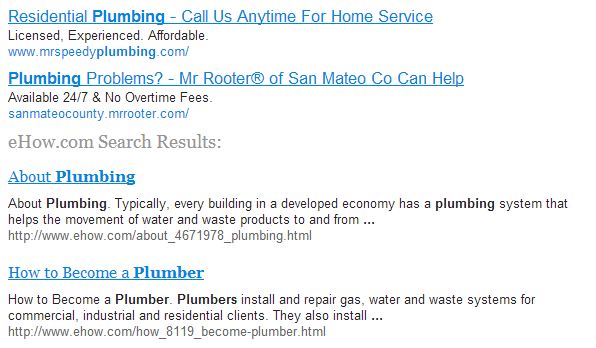
What to Know About Google AdWords Content Campaigns
If you’re new to Search Engine Marketing and/or using Pay-Per-Click ads, you may not be familiar with Google’s Content Search Network also known as the Google Display Network. Google’s Content Search Network allows you to expand your reach and get your ad in front of new audiences with targeted placement ads. Here, we discuss what they are and how to use Google AdWords Content Campaigns within your search engine marketing (SEM) strategy.
What is Google’s Content Network?
According to Wordstream, Google’s Content Network is “a network of sites that provide content (text, videos, audio, etc.) and allow advertisers to show ads along side it. You pay for placement on these sites, on either a cost-per click (CPC) or cost-per impression (CPM) basis.” Content and Display campaigns work in very similar ways, where you place targeted ads around relevant content and information across different websites all within Google’s network of partners. The main difference between this and traditional display ads is that you can also use keywords just like you do within your Search Campaigns. Google searches through relevant content that matches a specific list of targeted keywords. There are, of course, pros and cons to content campaigns just like everything else.
Pros
The biggest pro to using content campaigns is that you have amazing opportunity to reach new customers. Not only that, but these customers also tend to be more in the information gathering stage, so you can reach them higher up in the funnel. These folks may not even be aware yet of what you offer, so being able to target them early can give you an advantage over your competitors. Additionally, if you take the time to fine tune your content campaigns, you can bring in lots of visitors and conversions to your site at lower cost than traditional display methods. In addition, being able to use targeted keywords allows for your placement ads to be even more effective.
Cons
The cons can outweigh the pros if you don’t take time to optimize your content campaigns. Since Display and Content work in a similar way, one of the drawbacks to the content network is the high number of clicks and impressions your ad is likely to receive. Because users are simply browsing certain pages, the impression volumes will be higher and you most likely will get a higher number of clicks that won’t convert. This could increase your spend, lower your click-through-rates and impact your bottom line. Also because Google is choosing these placements for you, they may not always pick the best placements for your business.
In order to combat this, keep bids lows and exclude lower performing placements. By targeting very specific placements or blocking placements that aren’t bringing in quality traffic, you’ll be able to spend your marketing dollars more effectively. When incorporating keywords, this can help you to be a lot more effective that traditional display advertising. When advertising on Google’s content network, you must keep all these things in mind and tailor your strategy accordingly.
Incorporating content campaigns into your overall SEM strategy is still good idea. If you’re interested in testing out content campaigns or just looking for more information; check out Google’s Getting Started Blog. They’ve got tips and best practices to get you started on the right track. You can also grab our Small Business Guide to Google Adwords here.
Have any tips to add to ours? Share in the comments!
© 2013 – 2018, Contributing Author. All rights reserved.




